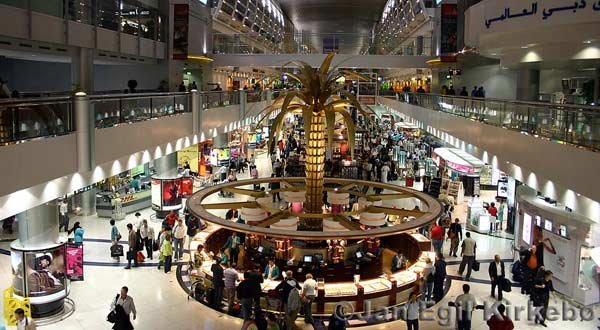 DUBAI, Nov 8 — Dubai’s hotels enjoyed a busy first nine months of the year, welcoming over nearly 8 million visitors between January and September 2013, a 9.8 percent year-on-year increase, according to Dubai’s Department of Tourism and Commerce Marketing (DTCM).
DUBAI, Nov 8 — Dubai’s hotels enjoyed a busy first nine months of the year, welcoming over nearly 8 million visitors between January and September 2013, a 9.8 percent year-on-year increase, according to Dubai’s Department of Tourism and Commerce Marketing (DTCM).
The latest visitor number results were released on the sidelines of the World Travel Market (London, U.K.), where DTCM and a 70-strong delegation of partners from the Emirate’s tourism industry are promoting Dubai’s diverse destination offering to key international buyers.
The results show an increase across hotel establishment guests, room occupancy levels, hotel and hotel apartment revenues and average length of stay, all key factors in order for Dubai to achieve its Tourism Vision for 2020.
During the first nine months of the year, guest numbers across all hotel establishments (hotels and hotel apartments) was 7,941,118, a 9.8 percent increase year-on-year. Hotel room occupancy averaged 78.6 per cent over the nine month period, up 3.1 per cent compared to the same period in 2012 and hotel apartment occupancy also saw steady growth, up 7.3 per cent to 81 per cent, compared with 75.5 per cent in the first nine months of 2012.
Increasing the length of stay has been identified as a key driver of tourism growth within the Tourism Vision for 2020 and these results were also positive, with the average length of stay across hotels and hotel apartments between January and September rising 3.5 percent year-on-year to 3.9 days.
Hoteliers and hotel apartment operators experienced significant growth in revenues, with total revenues for the first nine months of the year up by 17.1 percent, to AED15.33billion. Total guest nights also recorded similarly impressive rises, up 13.7 percent to 30,874,916 from 27,163,974 in the first nine months of 2012.
Helal Saeed Almarri, Director-General of DTCM, said, “These latest visitor figures show a steady and consistent increase across the key indicators that are critical in order to achieve our Tourism Vision for 2020. With guest numbers, room nights and length of stay all increasing, we have made positive early steps which demonstrate that while our aims are ambitious, they are achievable.
“A 17.1 percent increase in revenues for hotels is particularly encouraging, especially given the number of new establishments which have entered the market this year. This demonstrates that Dubai continues to represent a major opportunity for hotel developers and that we must continue to work to ensure that supply is meeting demand.
DTCM and our governmental partners are working on a number of measures in this regard, including the incentive we recently announced to encourage the development of more mid-range hotels.” Almarri continued, “Events are a key pillar of the Tourism Vision for 2020, with our objective being to transform Dubai from a regional events hub to a global destination for events and entertainment in order to attract an increased number of visitors to Dubai.
The inaugural Dubai Motor Festival is a demonstration of our intentions to develop a number of new festivals and events and we look forward to launching more within the next year.” Dubai’s Tourism Vision for 2020, announced earlier this year under the directive of His Highness Sheikh Mohammed bin Rashid Al Maktoum, Vice President and Prime Minister of the UAE and Ruler of Dubai, and spearheaded by DTCM, sets out how the Emirate will double its annual visitor numbers from 10 million in 2012 to 20 million in 2020.

